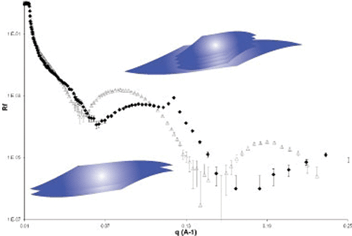Structure and stability of DPPE planar bilayers
Abstract
Biomembrane mimics in the form of supported planar bilayers allow the application of a wide range of surface and interface analytical techniques. The structure and phase-behavior of single and double bilayers of


 Please wait while we load your content...
Please wait while we load your content...